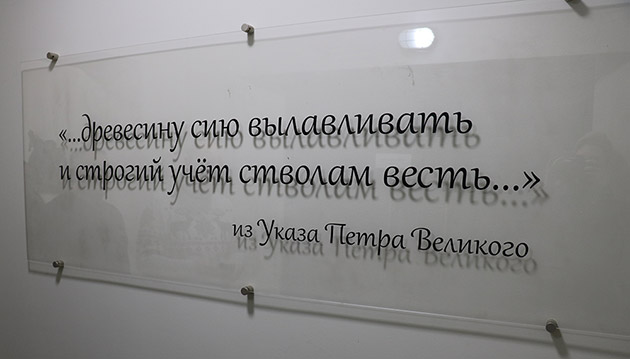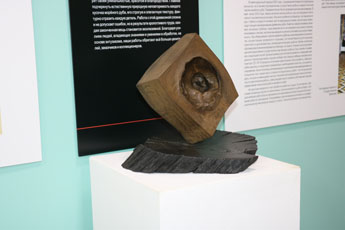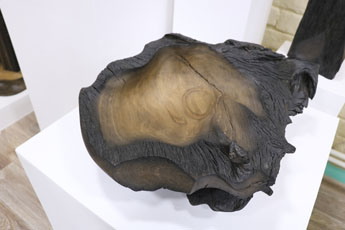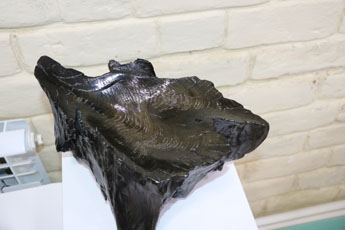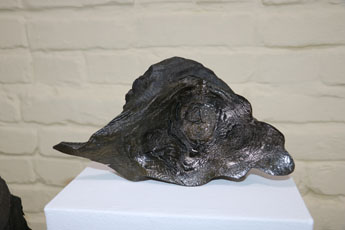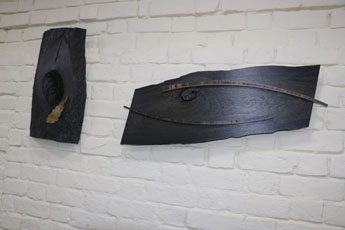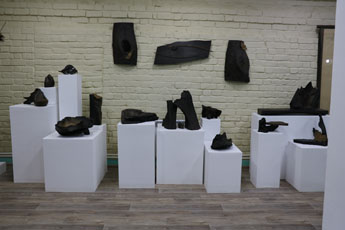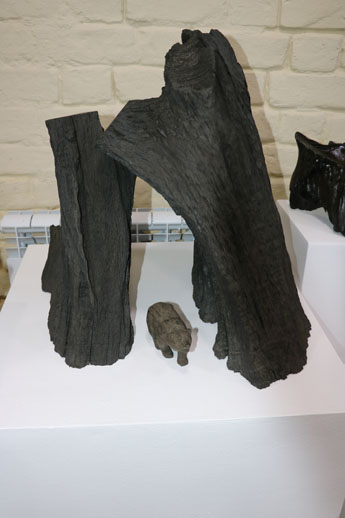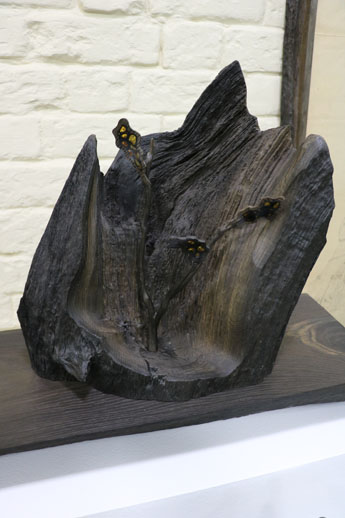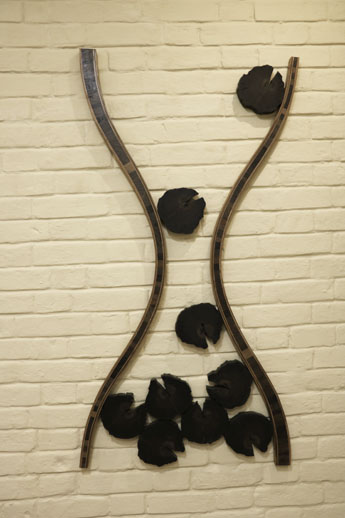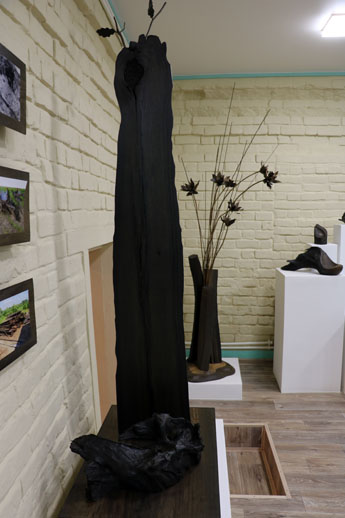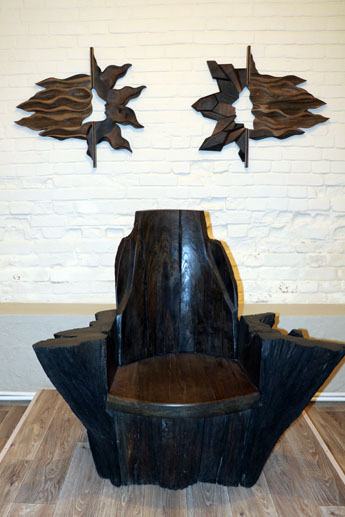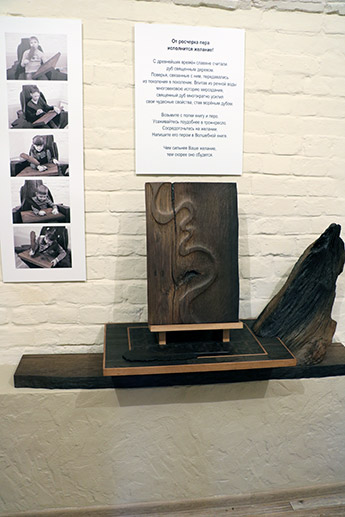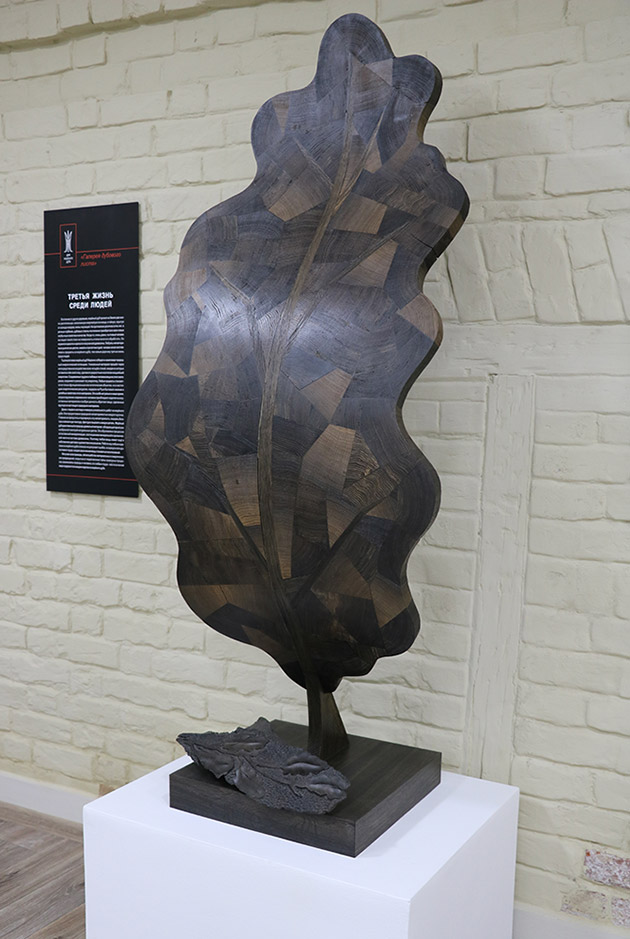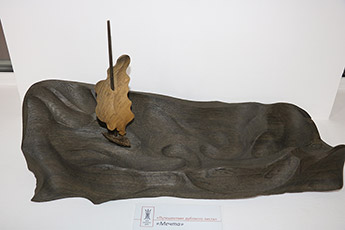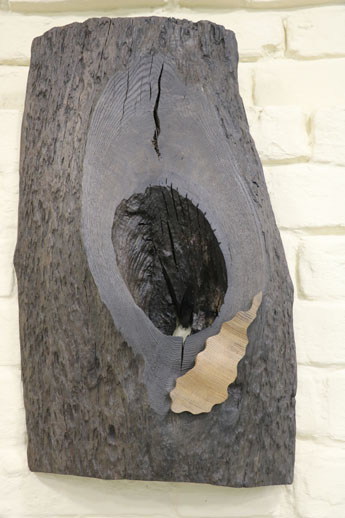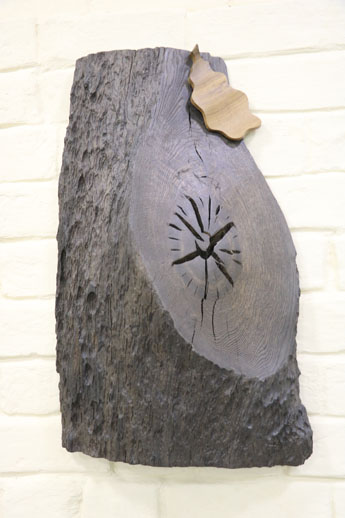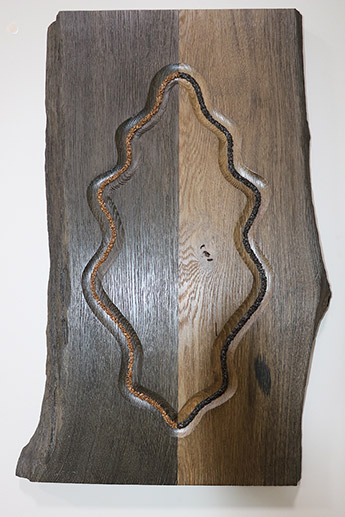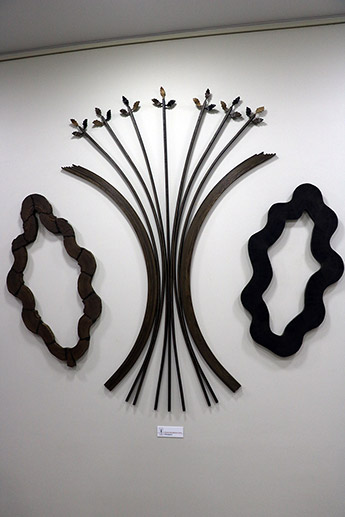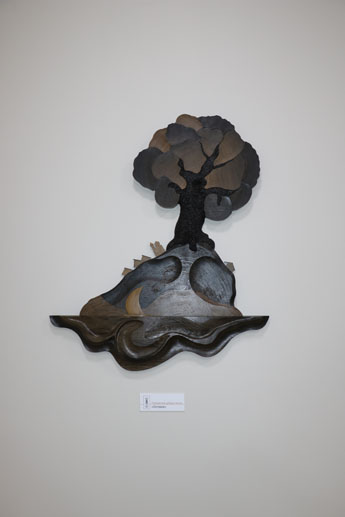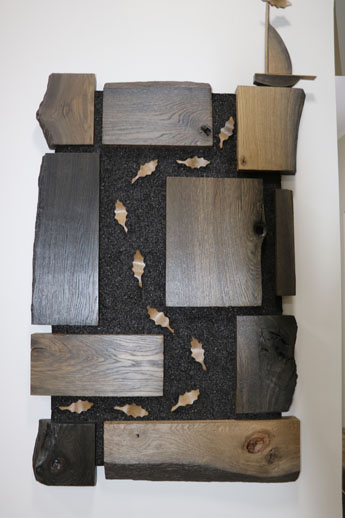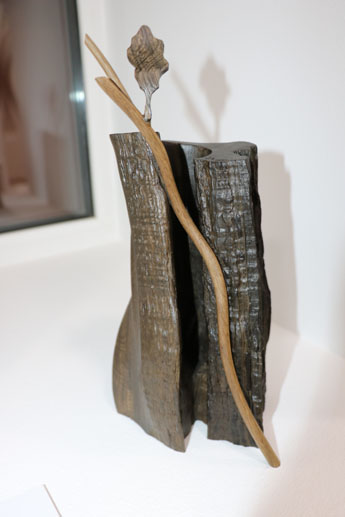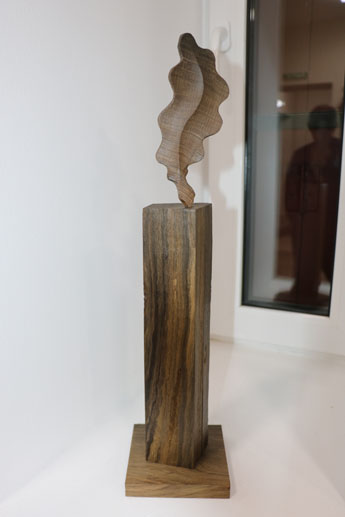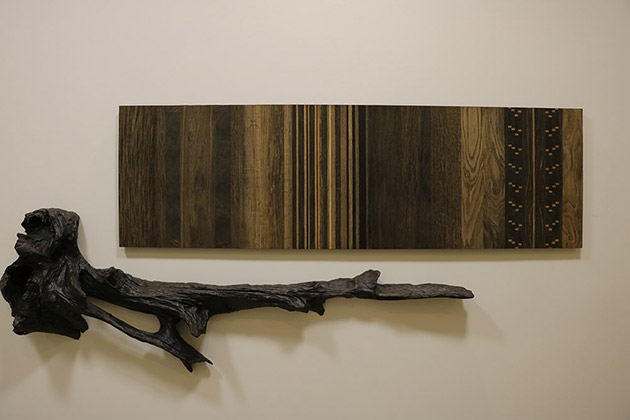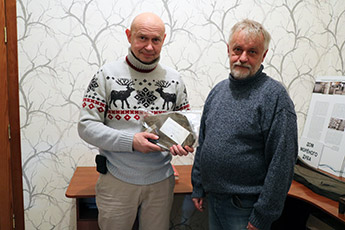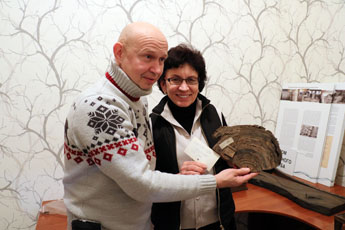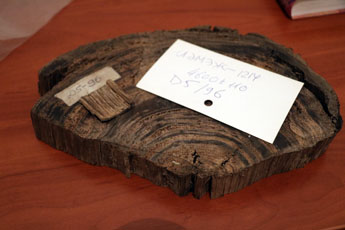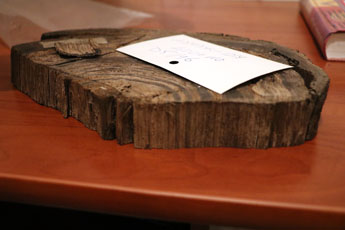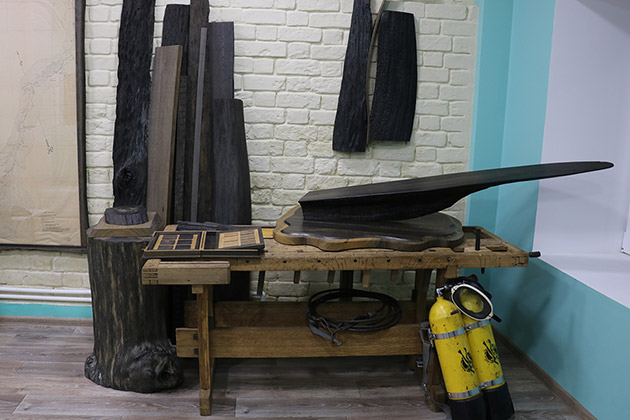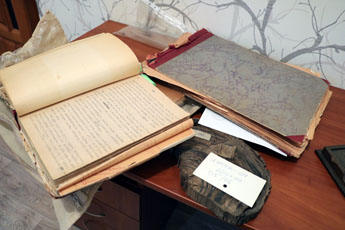Contemporary Museum of Calligraphy team spent Christmas Eve in the House of Bog
Christmas found the team of the Contemporary Museum of Calligraphy, led by its Director, Alexey Shaburov, in the House of Bog Oak in Kozmodemyansk, the Mary-El Republic. Opened in May 2016, the exhibition is a unique tourist attraction and the only one in Russia that reflects a modern view on this rare material.
Director of the Museum, Vladimir Kazakov, shared some details about his focus to establish a museum that reveals the revival of a long forgotten trade to source, process and use bog oak nowadays.
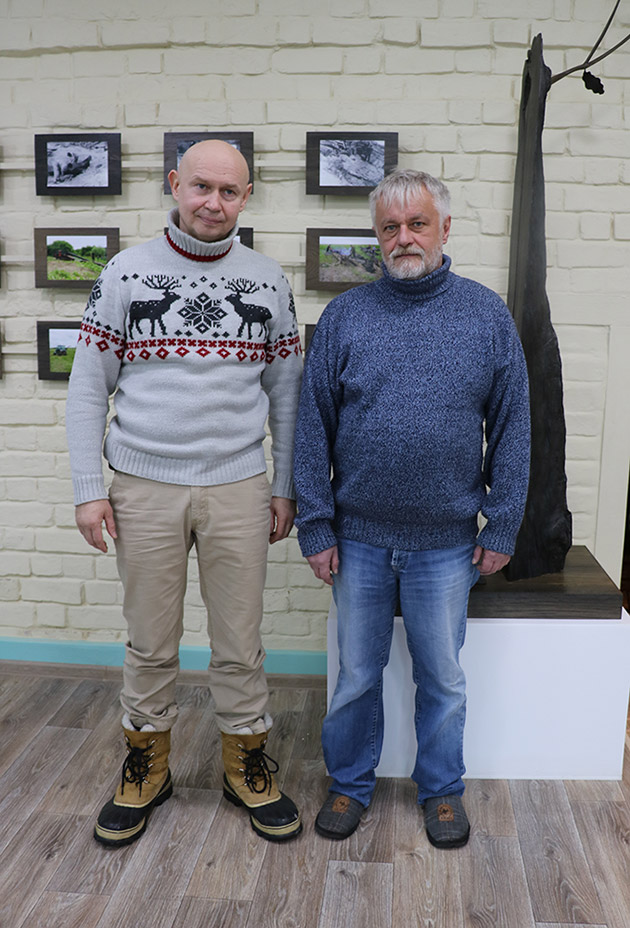 Alexey Shaburov, Director of the Contemporary Museum of Calligraphy (left) and Vladimir Kazakov, Director of the House of Bog Oak.
Alexey Shaburov, Director of the Contemporary Museum of Calligraphy (left) and Vladimir Kazakov, Director of the House of Bog Oak.A permanent exhibition named The Treasure of the River occupies several rooms and introduces the ancient trade to source and process this natural material, and the history of its revival in Russia, and in particular in Kozmodemyansk. The same rooms host installations named The Long Forgotten Trade, The Wood, The Book of Wishes and The Four Elements diptych, which narrate about the attributes and the process of sourcing bog oak, while also let experience the natural energy of this material with unique properties.
The Book of Wishes invites anyone to send an invisible message; as believed, it is bound to come true. As incredible as it may sound, according to some tourists, the wishes are indeed fulfilled.
Bog oak items were highly prized in Russia and globally at all times. Ebony gifts were associated with the most special occasions and passed down through the generations along with family jewellery. Traditionally small angels carved out of bog oak were gifts for the Saint's day or a wedding.
The second exhibition hall, The Gallery of the Oak Leaf, focuses on the gallery flagship, The Oak Leaf sculpture. The other wall framing works depict various modifications of the material as oak leaves.
It has to be said that natural bog oak is a truly unique material that features exclusively natural beauty and properties, which have nothing to do with any human skills.
The first encounter with bog oak can justifiably cause a whole host of questions: what is this material, how did it come to be and where is it sourced? Palaeographical studies show that due to stream bank erosion and river diversions oak groves ended up underwater where they spent hundreds of years exposed to tannin (or gallotannic acid) and lack of oxygen, thus developing black colour with a dark blue tint and noble silver or ash grey veins. These incredible colours inspired crafters to create the items of beauty beyond thought. One can hardly find a finer wooden texture, and this is the reason why the process of making any bog oak item never involves colorants or varnish. The colour signals the age of staining: straw and greyish shades are estimated to be 300-400 years old, while black colour takes over 1000 years to appear.
Kazakov's collection includes a unique piece of wood, which is 4600 years old according to a radiochemical analysis!
Sourcing of bog oak in Russia dates back to the 1870s. Researchers of the day report that Sura river (which borders the Mary-El Republic and Chuvashia) is literally “obstructed” with oak trunks. Sourcing itself is quite labour intensive. Vladimir shared his experience as all of the material on display was sourced with his own hands and further processed in Kazakov’s workshop.
“When we need firewood, we take an axe and go to the woods, and when we’re after bog oak, we put a scuba on and dive underwater,” he says.
Kazakov explains that every specimen of oak calls for an individual approach as there are no two identical pieces – they always vary in colour grade or age.
Currently bog oak items are not freely available, being kept either in museums and palace interiors, or in private collections. Unfortunately due to a number of reasons there is a strong lack of educational and specialized information about emerging, use and application of bog oak. Vladimir Kazakov continues his joint paleontological research with the Russian Academy of Sciences. Bog oak is a live climatic laboratory. One can call a tree trunk, which grew in sharply changing seasons (which is the case for all non-tropical countries), a document that conveniently records all weather specifics over its entire lifespan. Two trunks of the same species, time period and similar conditions will show identical types of details, which will differ from those of another era. Therefore these specifics enable to restore the climate change timeline in a certain area.
Despite its great reputation, a relatively low number of survived items and lack of information about them and the bog oak in general, the majority of data is vague and blurry, boiling down to the lines of “bog oak is very expensive and rare”.
Only a limited circle of experts and curious individuals know the true value of this materials and the items made of it. Not a single book exists to tell about bog oak as a material that was and today still is used to produce unique items. The latest research concerning bog oak dates back to the 1970s-1980s, as shown below.
Considering very limited reserves of bog oak, the majority of which is found in the former USSR countries, one can most certainly expect high demand. Increasing demand for high quality and environmentally friendly materials from concerned organizations and individuals will definitely preserve bog oak as a craft. A workshop in the House of Bog Oak provides a unique opportunity to adopt the long-term experience of processing and crafting this valuable natural material directly from a professional expert. However, Kazakov believes that a staffing issue is a big gap that needs to be filled with younger people.
Through combined efforts, advice and support from other owners, private museums manage to revive and preserve the art of folk crafts, exclusive objects of art, natural and cultural beauty of the multinational Russia. Exchange of experience between museum workers, their daily hard work and its yields to be shared with visitors, sustains a delicate generational bridge, enabling the development of a unique interaction between culture and mind, and therefore preserving the true historical memory to enrich knowledge and warm hearts.
The House of Bog Oak is more than a museum, but a true and unique miracle of the Volga, worth seeing for any Russian.
For the largest part ill handwriting in the world is caused by hurry.
(Lewis Carroll)
